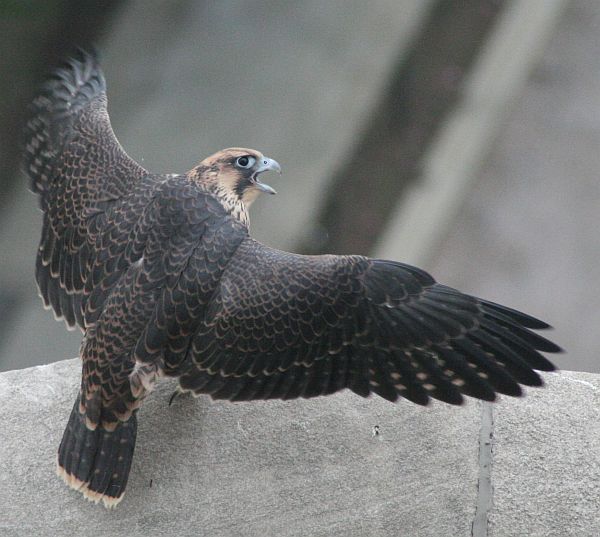 When young peregrines fly for the first time they’re specially equipped for their big adventure.
When young peregrines fly for the first time they’re specially equipped for their big adventure.
Like many raptors, peregrines’ tail feathers are longer in juvenile plumage than in adults. In peregrines it averages more than a centimeter. In red-tailed hawks the difference is even greater but the effect is the same. Longer tails give the birds more lift “by improving airflow over the wings, especially at slow speeds, and by reducing turbulence as air passes over the body.” (1)
The added lift makes the juveniles’ flight more buoyant than their parents’ and is a great help as they learn to fly and hunt.
By the time they molt into adult plumage a year later, young peregrines have mastered the skills they need and are ready for speed. In the meantime they have special gear to help them fly.
Think of their tails as “training wheels.”
(photo by Collette Ross. Today’s Tenth Page is inspired by and quoted from page 131 of Ornithology by Frank B. Gill. (1))
Great new information, Kate! Who’d ever have thunk? Mother Nature using a physics principle to solve a life problem! Thanks!